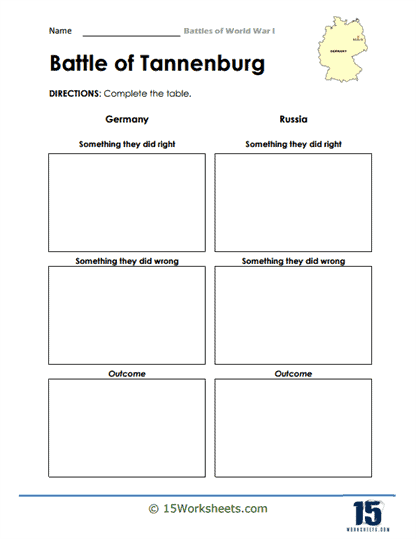Germany and Russia

Worksheet Description
This worksheet pertains to the Battle of Tannenberg, a significant conflict in World War I. It is structured as a comparative table between Germany and Russia, focusing on the strategies and outcomes of each nation during the battle. Students are tasked with evaluating the actions of both sides, identifying things each did correctly and incorrectly. The worksheet culminates with students detailing the outcomes for both Germany and Russia as a result of their decisions during the battle.
To effectively complete this worksheet, students should first research or recall details about the Battle of Tannenberg, paying particular attention to the strategies, decisions, and actions of both Germany and Russia. After gathering sufficient information, they should identify and record key decisions or actions that each country got right, alongside those that were potentially erroneous or detrimental. Once these aspects are covered, students should then detail the consequences or outcomes that befell each country due to their respective choices in the battle. It’s essential for students to support their points with factual evidence from the historical event.
The intent behind this worksheet is to cultivate critical thinking and analytical skills in students concerning historical events. By assessing the decisions and outcomes of the involved nations, students are encouraged to delve deeper into the intricacies of military strategy and the broader consequences of those choices. The worksheet promotes a balanced perspective by prompting learners to consider both the positive and negative aspects of each country’s actions. Ultimately, the aim is to help students appreciate the complexity of historical events, understand the factors that influence outcomes, and develop a nuanced view of history.
